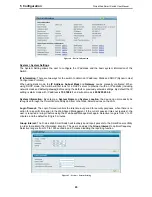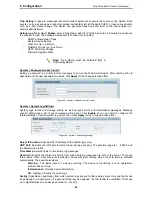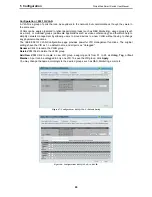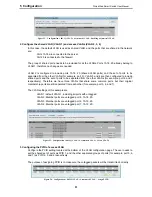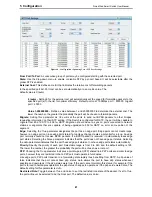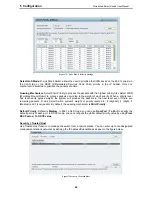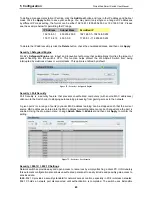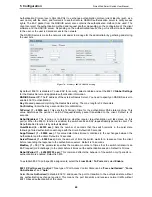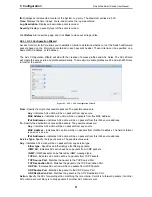
5 Configuration
D-Link Web Smart Switch User Manual
Figure 63 – Configuration > Port Mirroring
Selection options for the Source Ports are as follows:
TX (transmit) mode:
Duplicates the data transmitted from the source port and forwards it to the Target Port.
Click “all” to include all ports into port mirroring.
RX (receive) mode:
Duplicates the data that received from the source port and forwards it to the Target Port.
Click “all” to include all ports into port mirroring.
Both (transmit and receive) mode:
Duplicate both the data transmitted from and data sent to the source
port, and forwards all the data to the assigned Target Port. Click “all” to include all ports into port mirroring.
None:
Turns off the mirroring of the port. Click “all” to remove all ports from mirroring.
Configuration > Loopback Detection
The Loopback Detection function is used to detect the loop created by a specific port while Spanning Tree
Protocol (STP) is not enabled in the network, especially when the down links are hubs or unmanaged
switchs. The Switch will automatically shutdown the port and sends a log to the administrator. The Loopback
Detection port will be unlocked when the Loopback Detection
Recover Time
times out. The Loopback
Detection function can be implemented on a range of ports at a time. You may enable or disable this function
using the pull-down menu.
Figure 64 – Configuration > Loopback Detection
Loopback Detection State:
Use the drop-down menu to enable or disable loopback detection. The default
is
Disabled.
3
3
7
7



